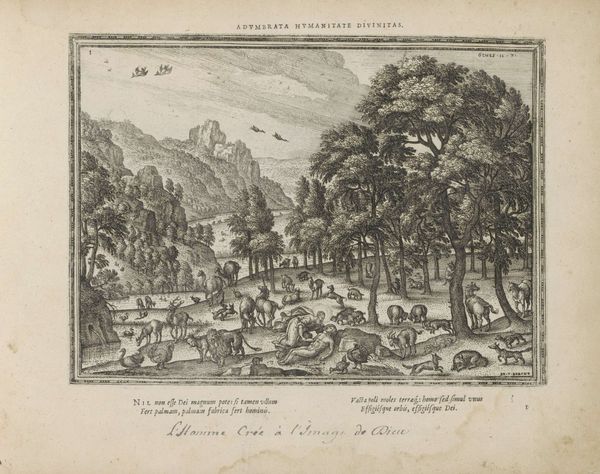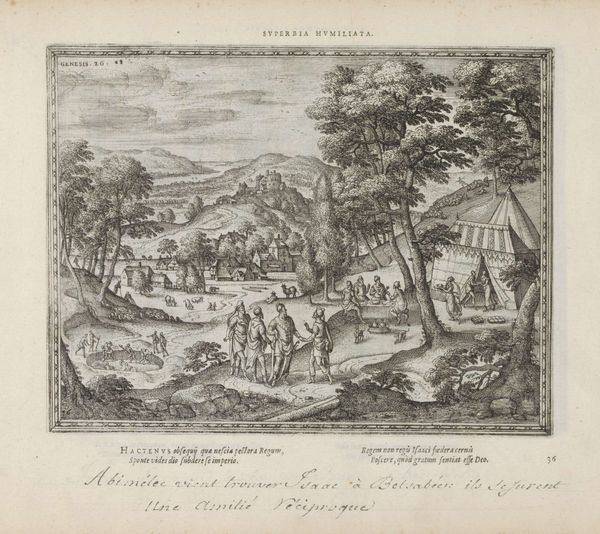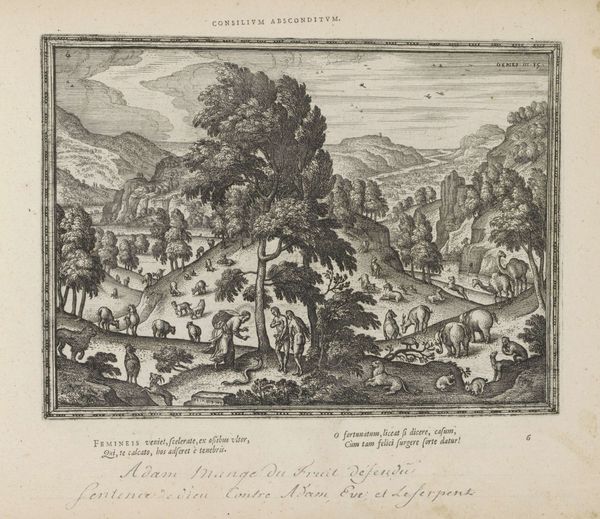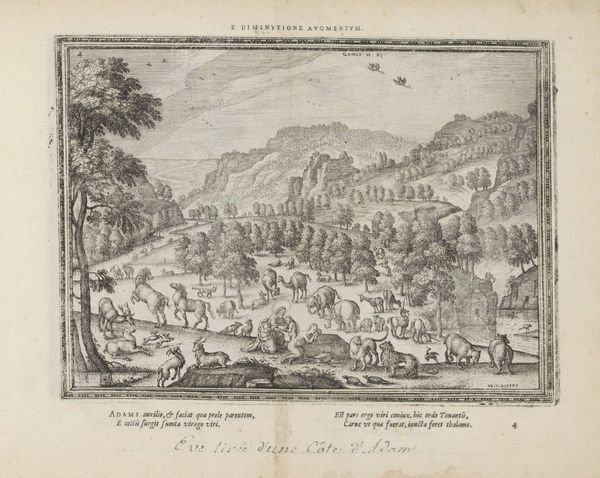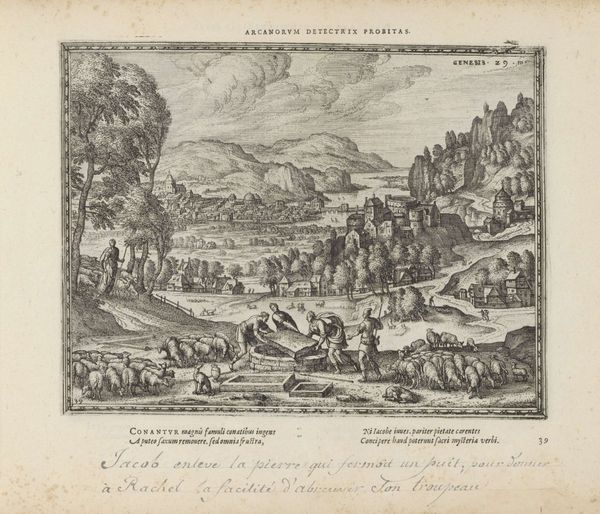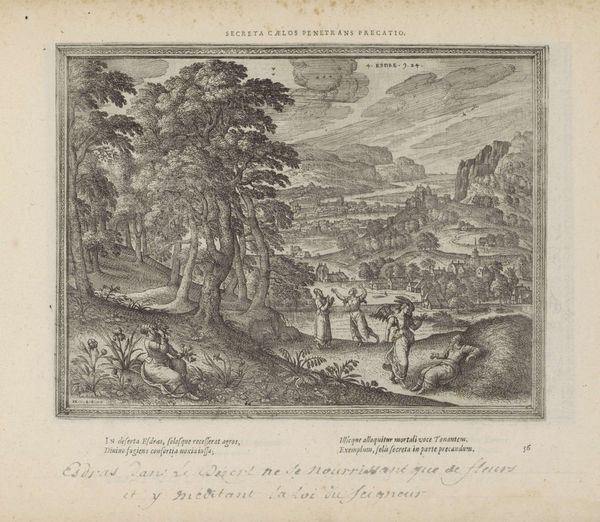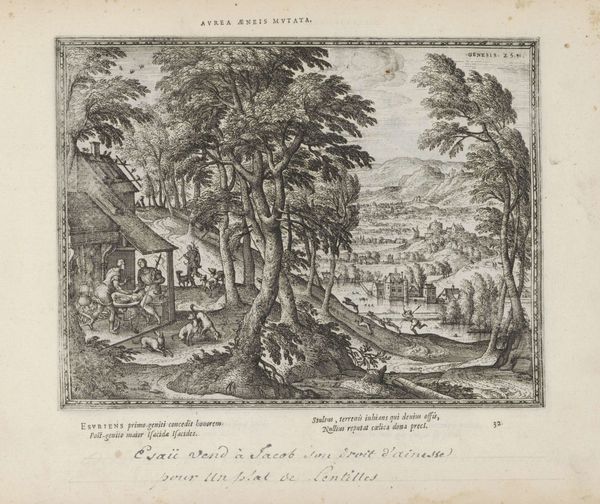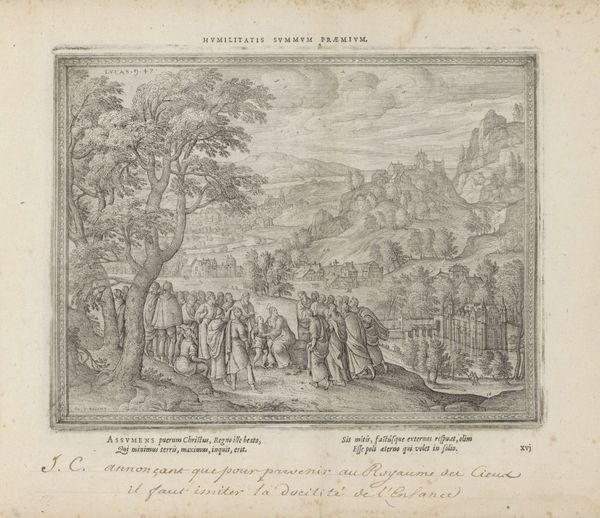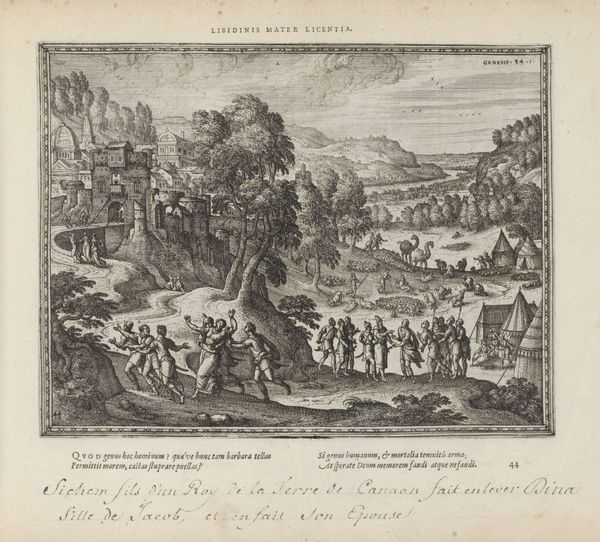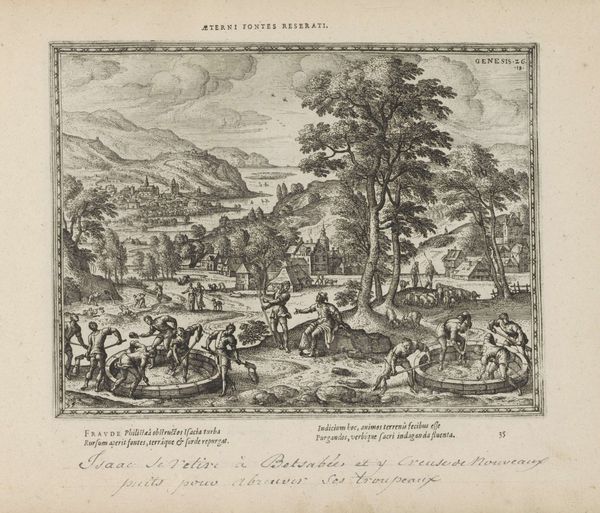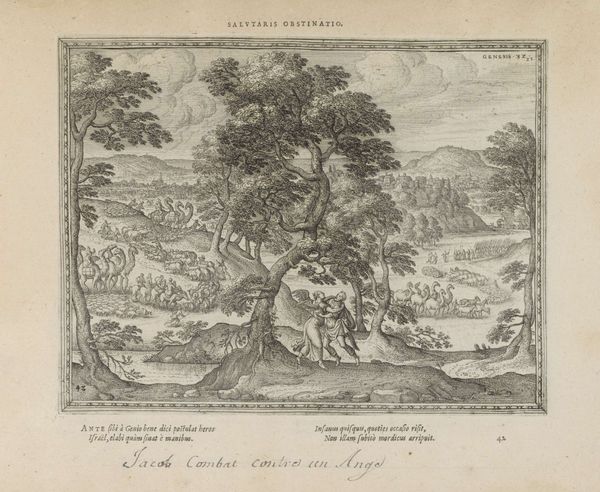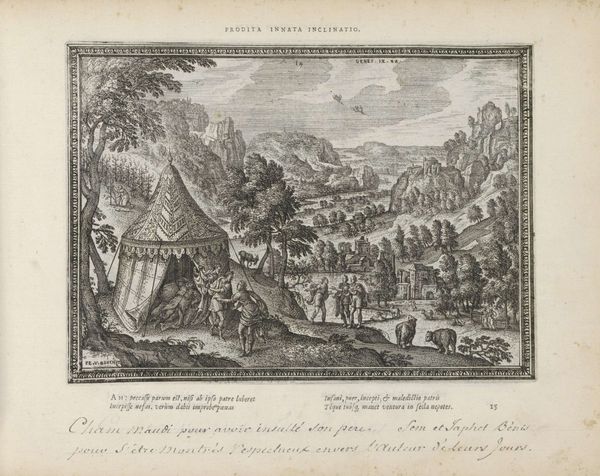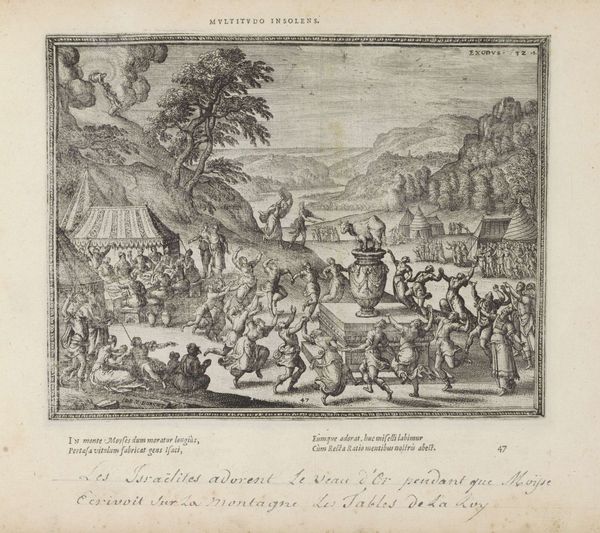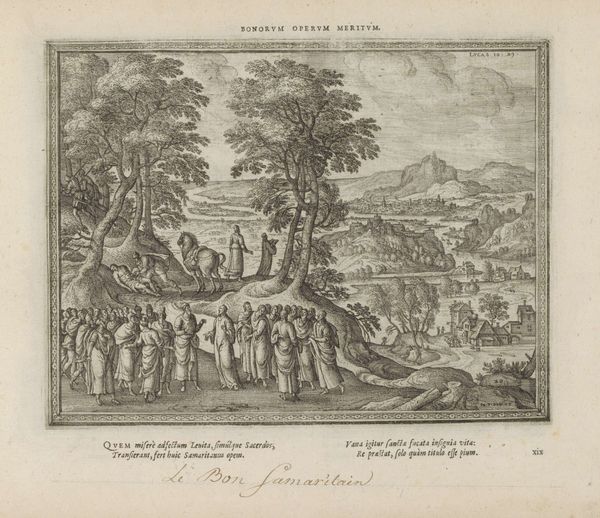
engraving
#
narrative-art
#
landscape
#
figuration
#
line
#
genre-painting
#
history-painting
#
northern-renaissance
#
engraving
Dimensions: height 187 mm, width 254 mm
Copyright: Rijks Museum: Open Domain
Pieter van der Borcht created this image, ‘God toont Adam het paradijs,’ around 1600, using engraving. The technique involves incising lines into a metal plate, inking it, and then pressing it onto paper. Look closely and you’ll see how the network of precise marks builds up the scene. The artist has absolute control of the material. It's a skill that demands careful labor and, importantly, allows for the image to be reproduced in multiples. This brings a new dimension to the story of Adam and Eve. Van der Borcht was working at a time of religious upheaval, when printed images were powerful tools in the battle for hearts and minds. By choosing engraving, with its capacity for mass production, the artist ensured that his vision of paradise, and the consequences of its loss, could be widely disseminated, influencing public perceptions far beyond the circles of wealthy art collectors. It speaks to the democratizing potential inherent in the making process.
Comments
No comments
Be the first to comment and join the conversation on the ultimate creative platform.
